Last Friday Deb & I were able to enjoy a few hours sharing a blue berry patch with nine Black Bear; Deb picked the wild Blue Berries and I photographed the wild Black Bear! The nine bear we saw comprised three families, each with an adult female and two cubs. Neither of us had ever seen that many bear sharing essentially the same space for such a long time. The bear were in the area to feast on the abundant Blue Berries and although the three families never mingled they were regularly within about 100′ of each other. Each mother bear would move rather systematically through the patch with the cubs bounding around behind her, constantly on the move, never too far away and occasionally slowing down to eat some berries. There was no doubt they were tight family units as seen in these next two images.
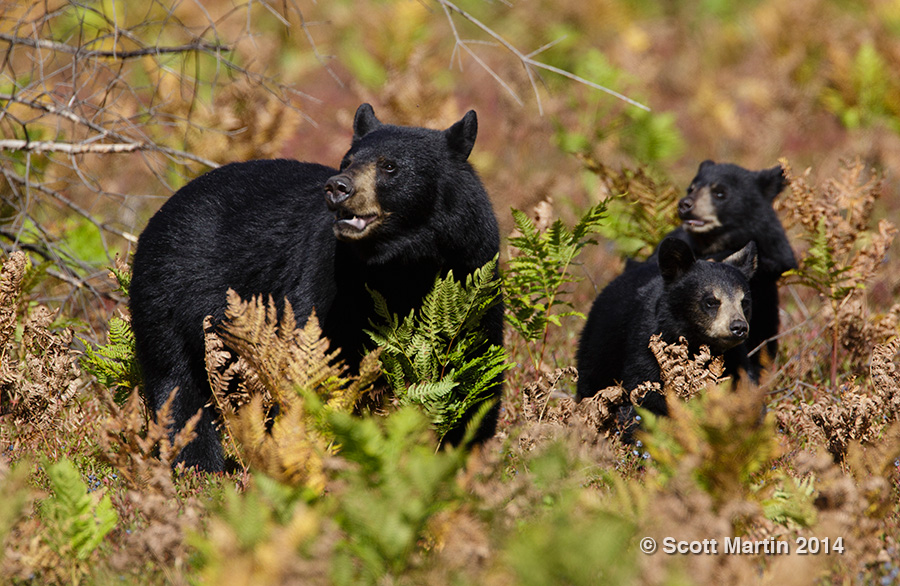
This next shot is in very harsh light but I liked the symmetry of mom and cub.
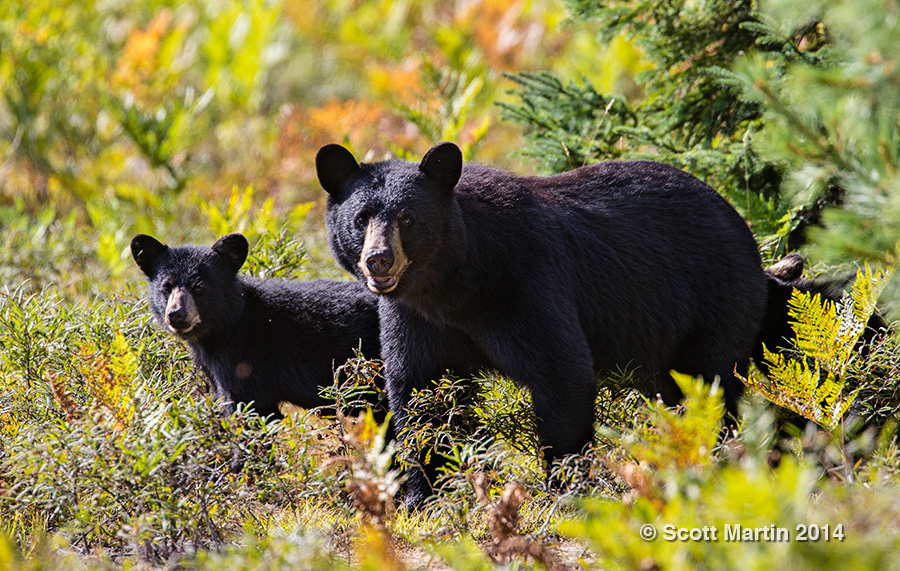
Black Bears are found throughout Canada and it is estimated that there are more than half a million bears in the country. They are found in all of the Canadian provinces and territories with the exception of Prince Edward Island where they have been extinct since 1937.
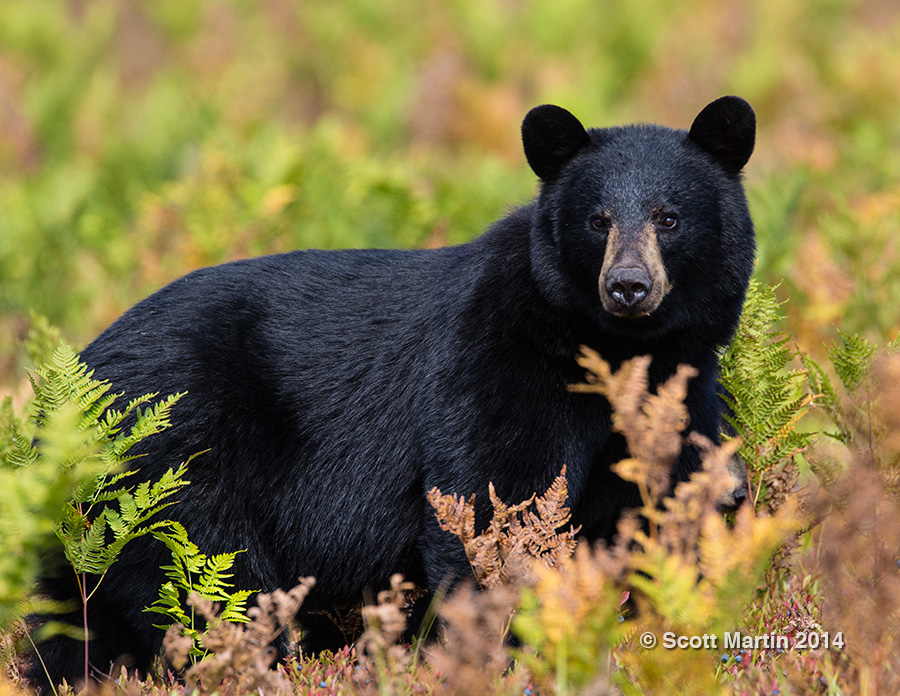
Adult Black Bears vary a lot in size, with a typical weight range between 125 and 550 pounds. The average adult male in Ontario is around 250 pounds while the females average less than 200 pounds. As Black Bears hibernate their weight fluctuates a lot over the course of a year with their spring weight usually 30-35% less than their late fall weight. The heaviest recorded wild Black Bear was from New Brunswick and was estimated to have weighed 1,100 pounds. The pelage, or coat, of a Black Bear is thick, dense and at this time of year very healthy as can be seen in this next image.
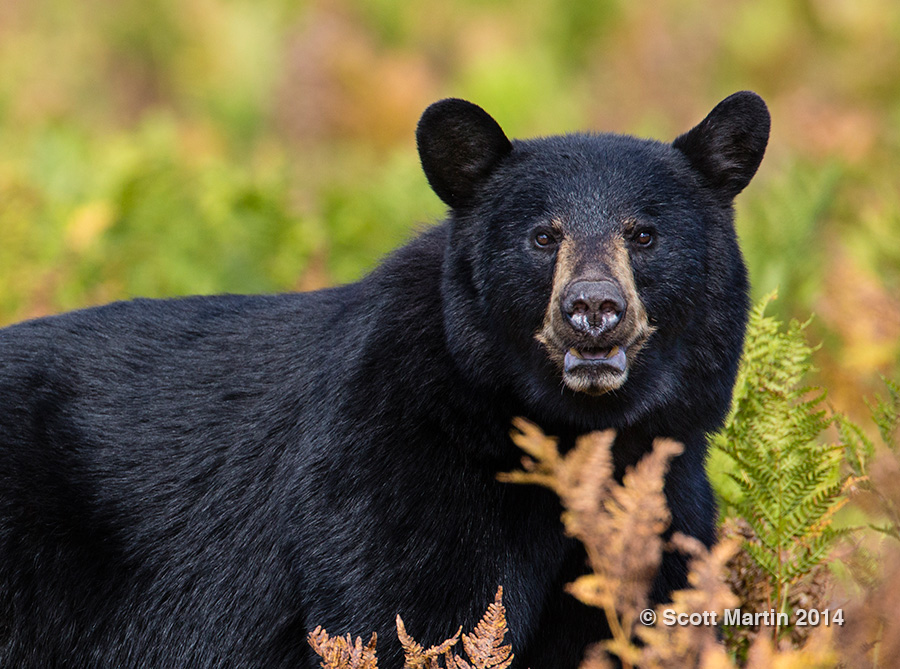
Bears move into their dens for winter in late October and early November and for the two months that precede that, their full time job is eating enough to put on 30-50 pounds of fat that will sustain them through the winter. Eight five percent of a bears diet consists of vegetation and the animal sources of food are usually bees, ants and larvae. In the spring when they emerge from their dens, they will eat carrion in order to quickly replenish their muscle mass. They rarely attack other animals, or people, for food, although the rare cases in which they do are well publicized and perhaps earn the peaceful Black Bear a reputation worse than they deserve. In this next shot you can see that the girth of the adult is growing as she readies for the winter.
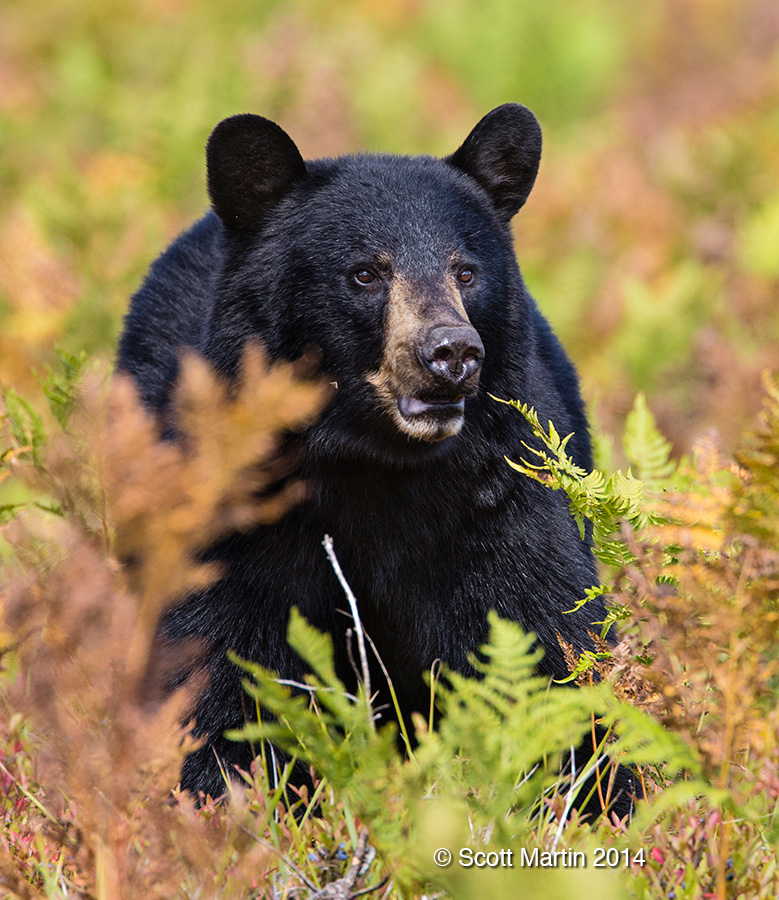
This next image reminds me more of a beautiful black dog, than a bear. It almost looks like you could wander up and pet her.
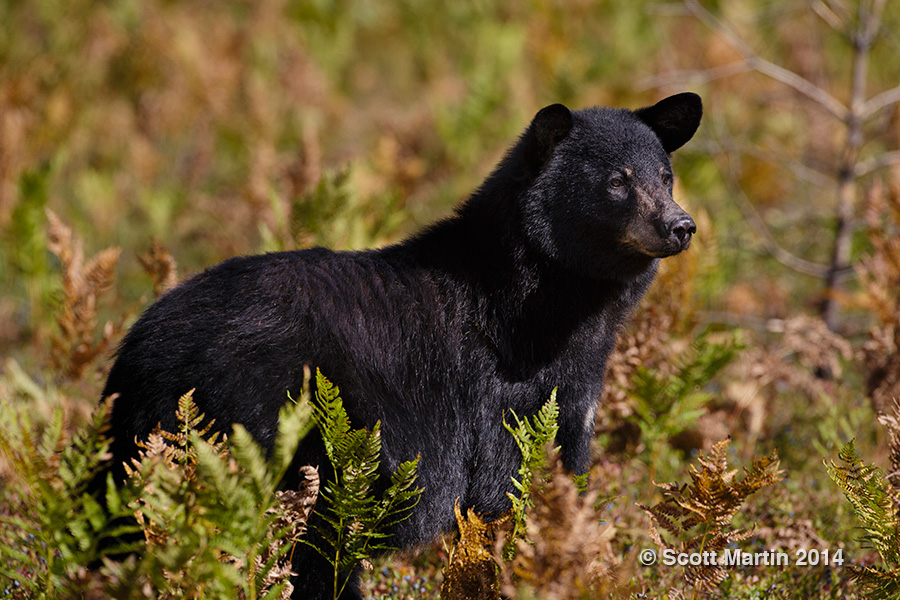
…..and a more traditional looking bear pose!
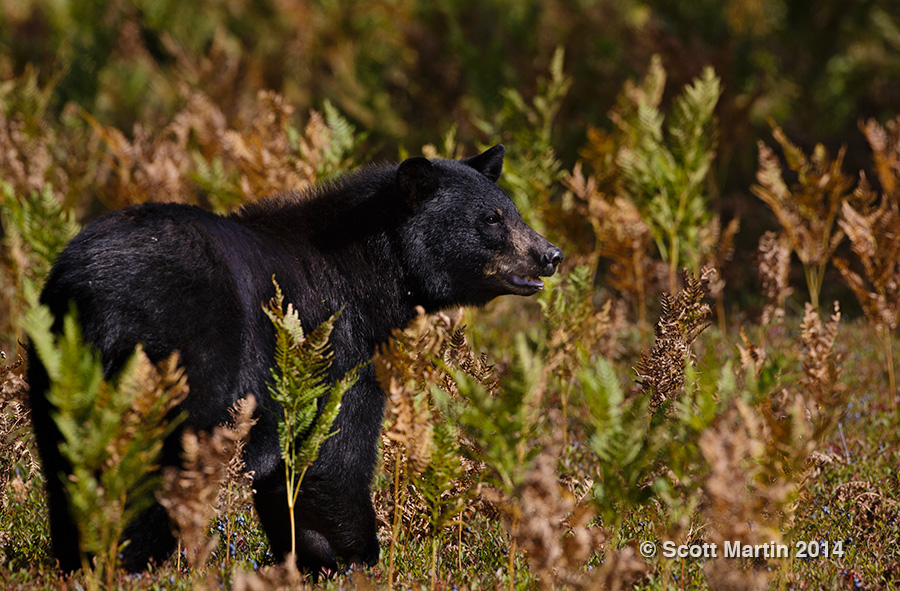
The above images are all of the same adult female bear. These next images are of the second family that wandered into the blue berry patch. The next uncropped image is one of my favourites as the bear was lying down on a small knoll under the branches of a tree keeping watch over her two little cubs. This afforded the time to take some portraits of her and actually get low enough to the ground so I could be looking up slightly at the bear providing a rather unique perspective for a bear photograph. She looks so peaceful!
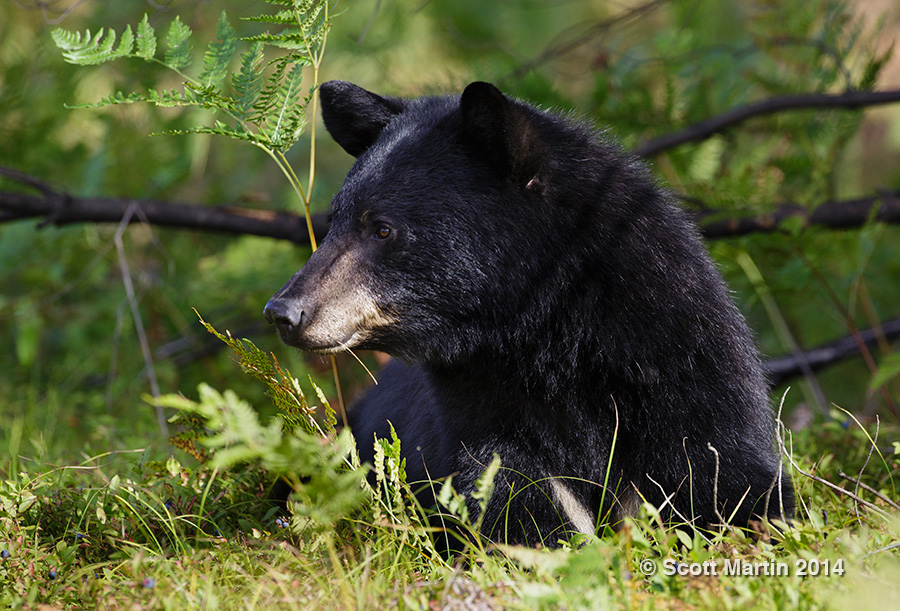
There was one other photographer in the area when I took the above shot and apparently he caught the attention of the bear as she got up from her spot under the tree and took a step towards him with a much less docile looking demeanour as seen in the next image.
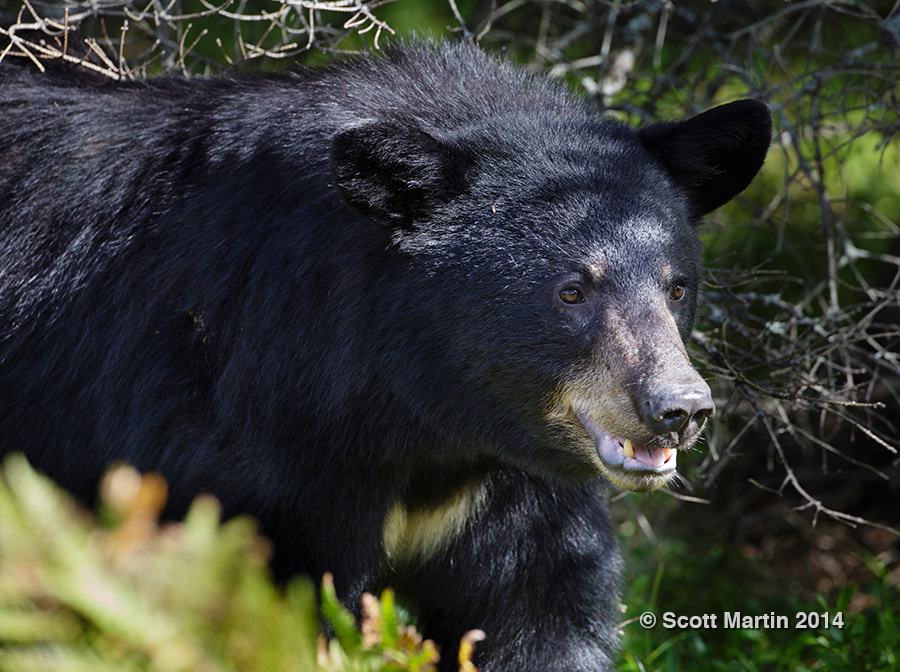
The bear in the above image was actually missing its front right paw which is shown in the image below. Although one might think it would have the lost the paw in a bear trap, this is unlikely for a bear living within the safety of the vast expanse of Algonquin Park. A good friend of mine (and bear expert) who was with Deb & I when we saw these bears explained that the more likely cause of the missing paw was the bear defending her cubs against the attack of another adult male Black Bear. Apparently, other than during mating season when males impregnate as many females possible, the relationship between the adult sexes is very antagonistic. Male adults will kill young cubs in order to preserve their dominance in the community. Similar behaviour is noted among Lion populations in Africa. Although this bear was missing her paw, she was able to get around fairly well although with a very distinctive gait that was easily recognizable. People in the area said she lost the paw about three years ago so she has obviously adapted well to her disability.
The next two images are of the third adult female Black Bear we observed. She was a large bear that also had two cubs. The first shot is of her standing amongst the ferns and providing a great profile portrait. Although rather artsci for a wildlife shot it’s another of my favourites from the day. This was the only tagged bear we observed and you can see the tag in her right ear.
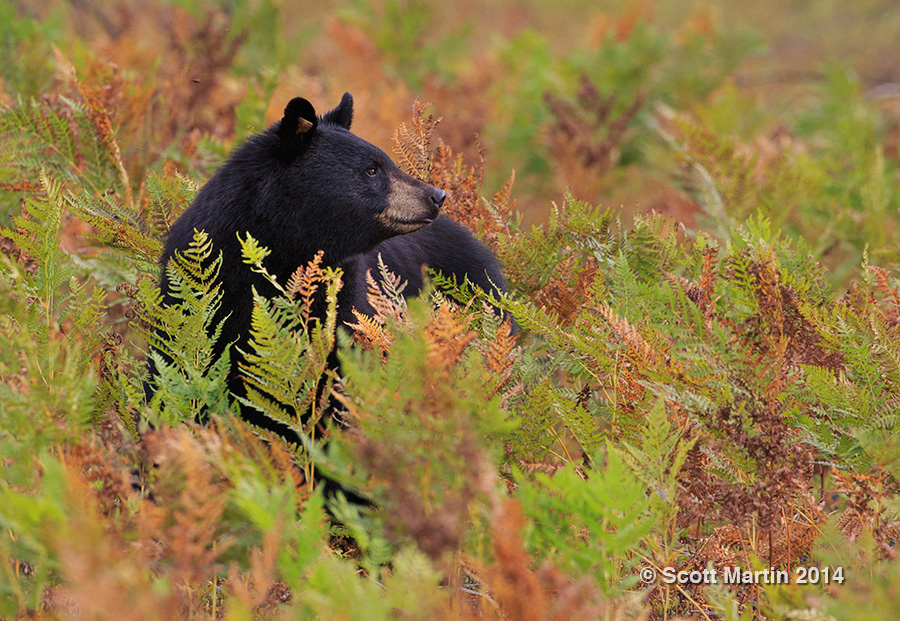
As a wildlife photographer you always hope to capture a shot of a bear standing up and it was a thrill to not only observe the bear rising to its full height, but to catch it on the sensor of the camera. The wild bears don’t spend as much time on their hind feet as Yogi seemed to 🙂
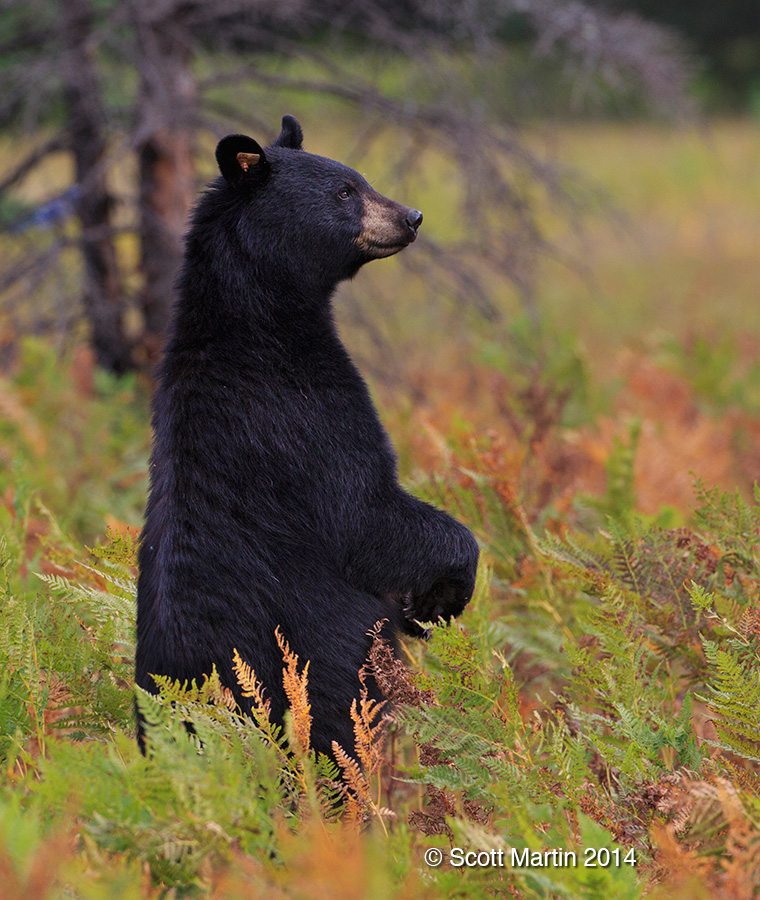
The cubs were difficult to photograph as they were small enough to easily hide within the ferns and rarely came into the open for an unobstructed view. Even when they were just peeking out from the vegetation they sure looked more cute and cuddly than they actually are!
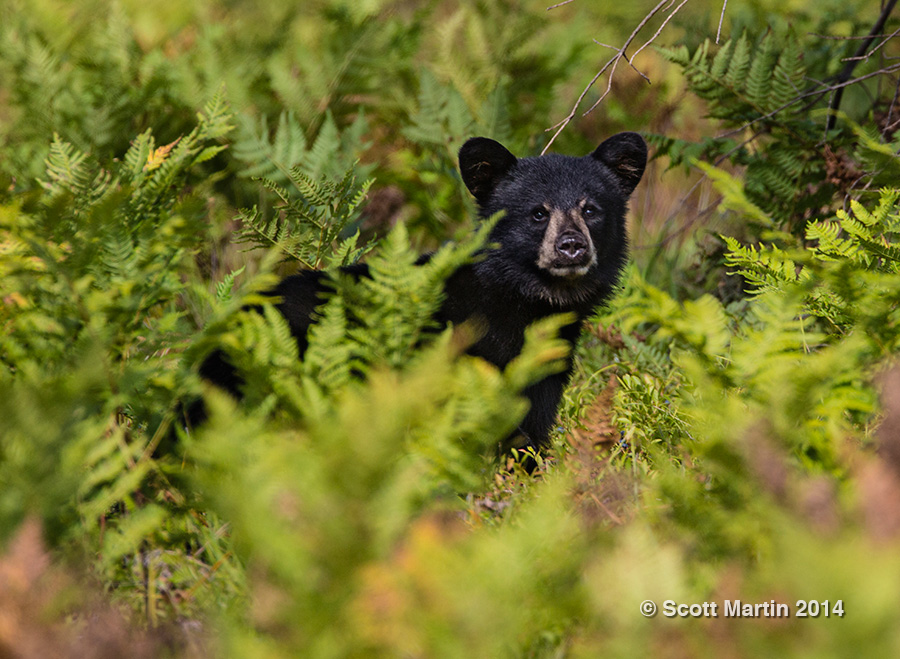
This next image is another favourite, with a young cub standing up and checking out the surroundings. This bear is one of about 20% of the bear population that has a white chest patch in its coat.
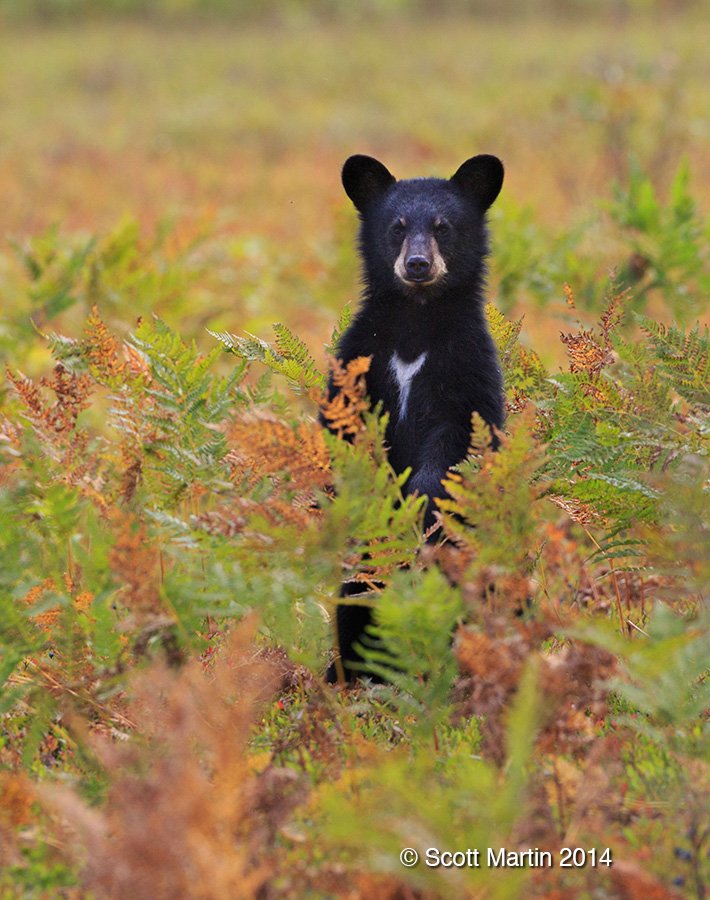
This final image was one of the last taken on the day…..I think mom and her cub were eyeing Deb’s blue berry container which was quite full after a few hours of picking.
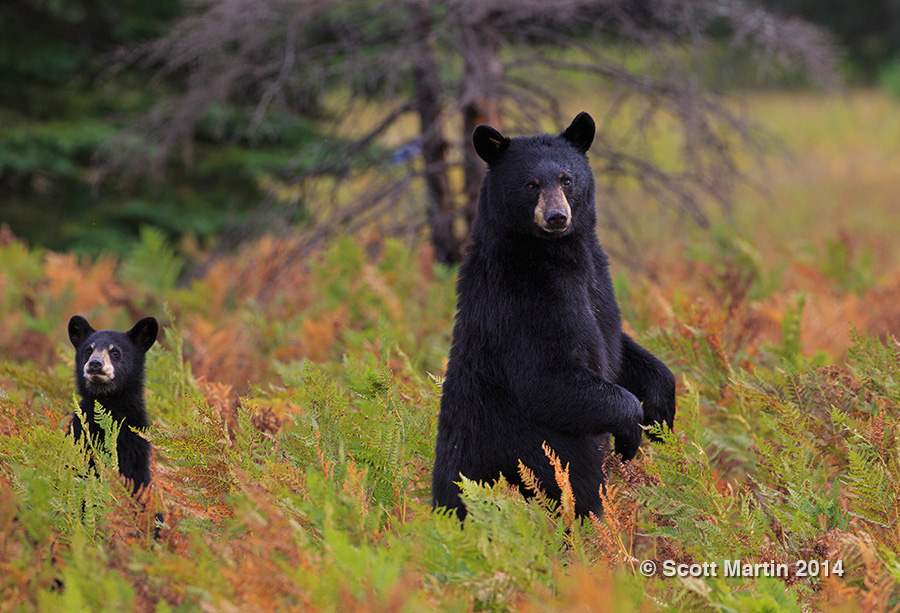
All of the images for this post were taken with the Canon 5D Mk III and 500mm telephoto lens. Instead of using a tripod which is awkward to use when you are constantly moving around, I used a Jobu monopod and Jobu Jr. 3 gimbal head to support the heavy camera and lens. It would have been impossible to hand hold the heavy gear for the few hours we spent with the bears and the monopod with gimbal head provided the perfect solution for support of the gear and easy mobility over the terrain. If you don’t already own a monopod, I highly recommend that you purchase one and the Jobu is the one to buy, its carbon fibre makes it very light and Jobu is a Canadian company.


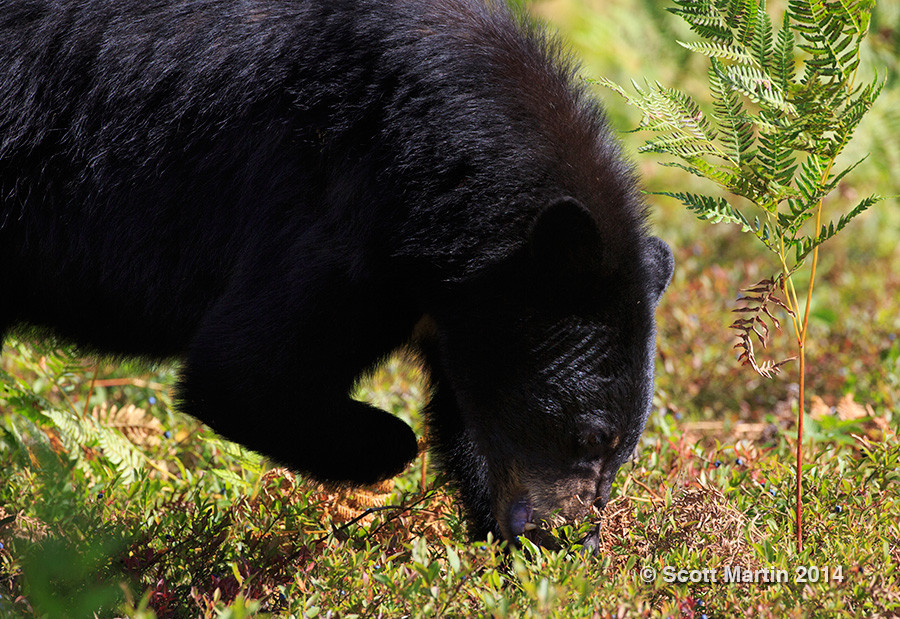
Scott, what an adventure this must have been. Gorgeous photography and have learnt so much about the black bear. As I said on FB you have destroyed all my childhood memories of Yogi & Boo Boo though (lol). Stunning shots mate
Thanks Rob and I was the same way with Yogi & Boo Boo 🙂
You have to be so pleased with these superb images Scott, what a unique opportunity! This post is one of the best examples of ‘right time, right place’.
Thanks Arni and yes its always nice when everything comes together perfectly. I just wish it happened more often 🙂
Great pictures Scott.
I, as well, had an encounter with a black bear back in 1996 and it scared the life out of me. He wandered around this matchbox of a cabin I was staying in and it happened around midnight. There wasn’t a soul around except for me and Myles (6 yrs at the time). Thankfully, after a few circles around the cabin, he wandered off.
They are pretty scary up close and personal, but very beautiful from a safe distance.
Thanks Lori and I’m glad you enjoyed the bear pics although I’m sure your heart still beats a little faster when you think about your experience with them!